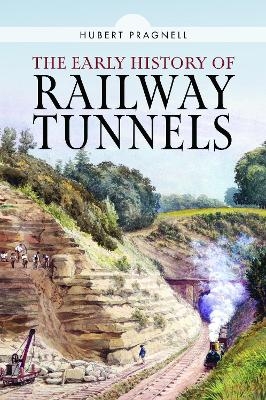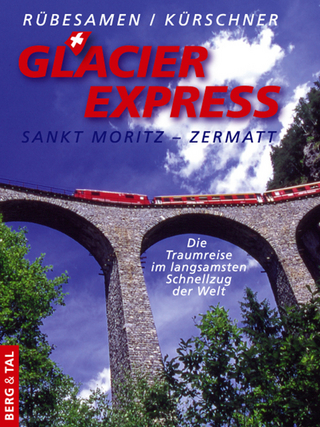
The Early History of Railway Tunnels
Seiten
2024
Pen & Sword Transport (Verlag)
978-1-3990-4940-5 (ISBN)
Pen & Sword Transport (Verlag)
978-1-3990-4940-5 (ISBN)
To the early railway traveller, the prospect of travelling to places in hours rather than days hitherto was an inviting prospect, however a journey was not without its fears as well as excitement. To some, the prospect of travelling through a tunnel without carriage lighting, with smoke permeating the compartment and the confined noise was a horror of the new age. What might happen if we broke down or crashed into another train in the darkness? To others it was exciting, with the light from the footplate flickering against the tunnel walls or spotting the occasional glimpses of light from a ventilation shaft.
To the directors of early railway companies, planning a route was governed by expense and the most direct way. Avoiding hills could add miles but tunnelling through them could involve vast expense as the Great Western Railway found at Box and the London and Birmingham at Kilsby. Creating a cutting as an alternative was also costly not only in labour and time, but also in compensation for landowners, who opposed railways on visual and social grounds having seen their land divided by canals.
Construction involved millions of bricks or blocks of stone for sufficiently thick walls to withstand collapse. However, the entrance barely seen from the carriage window might be an impressive Italianate arch as at Primrose Hill, or a castellated portal worthy of the Middle Ages as at Bramhope.
This book sets out to tell the story of tunnelling in Britain up to about 1870, when it was a question of burrowing through earth and rock with spade and explosive powder, with the constant danger of collapse or flooding leading to injury and death. It uses contemporary accounts, from the dangers of railway travel by Dickens to the excitement of being drawn through the Liverpool Wapping Tunnel by the young composer Mendelssoln. It includes descriptions from early railway company guide books, newspapers and diaries. It also includes numerous photographs and coloured architectural elevations from railway archives.
To the directors of early railway companies, planning a route was governed by expense and the most direct way. Avoiding hills could add miles but tunnelling through them could involve vast expense as the Great Western Railway found at Box and the London and Birmingham at Kilsby. Creating a cutting as an alternative was also costly not only in labour and time, but also in compensation for landowners, who opposed railways on visual and social grounds having seen their land divided by canals.
Construction involved millions of bricks or blocks of stone for sufficiently thick walls to withstand collapse. However, the entrance barely seen from the carriage window might be an impressive Italianate arch as at Primrose Hill, or a castellated portal worthy of the Middle Ages as at Bramhope.
This book sets out to tell the story of tunnelling in Britain up to about 1870, when it was a question of burrowing through earth and rock with spade and explosive powder, with the constant danger of collapse or flooding leading to injury and death. It uses contemporary accounts, from the dangers of railway travel by Dickens to the excitement of being drawn through the Liverpool Wapping Tunnel by the young composer Mendelssoln. It includes descriptions from early railway company guide books, newspapers and diaries. It also includes numerous photographs and coloured architectural elevations from railway archives.
Hubert Pragnell is an architectural historian, teacher and artist, who has been fascinated by railways and their history since childhood. He was written several books on architectural and London history. For many years he has been a tutor for the Department for Continuing Education at Oxford and previously taught history of art at The King’s School, Canterbury. He studied fine art at the Ruskin School of Fine Art, Oxford, and holds a PhD from the University of York.
| Erscheinungsdatum | 21.08.2024 |
|---|---|
| Zusatzinfo | 80 mono illustrations; 80 Illustrations |
| Verlagsort | Barnsley |
| Sprache | englisch |
| Maße | 156 x 234 mm |
| Themenwelt | Natur / Technik ► Fahrzeuge / Flugzeuge / Schiffe ► Schienenfahrzeuge |
| ISBN-10 | 1-3990-4940-2 / 1399049402 |
| ISBN-13 | 978-1-3990-4940-5 / 9781399049405 |
| Zustand | Neuware |
| Haben Sie eine Frage zum Produkt? |
Mehr entdecken
aus dem Bereich
aus dem Bereich
die Rhätische Bahn schreibt Geschichte
Buch | Hardcover (2023)
Edition Somedia (Verlag)
59,00 €
St. Moritz – Zermatt : die Traumreise im langsamsten Schnellzug der …
Buch | Hardcover (2023)
Verlag Berg & Tal
14,95 €
Betriebsmaschinendienst, Einsatz bei den Bahnbetriebswerken und …
Buch | Hardcover (2024)
EK-Verlag
54,00 €


